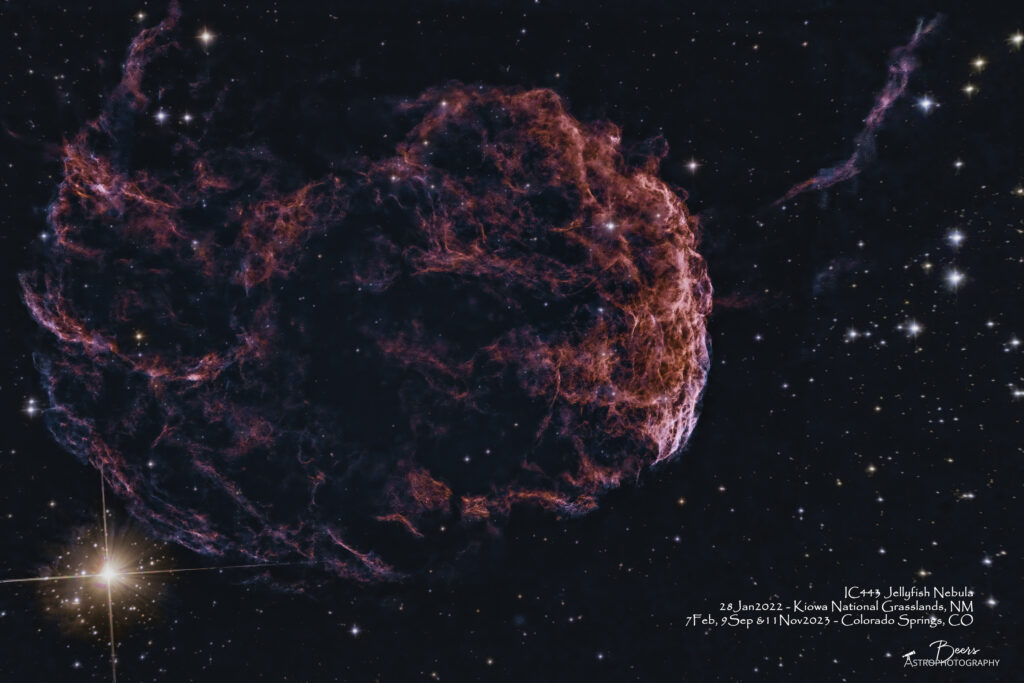I spent a clear Veterans’ Day night on the front patio capturing more data on the Jellyfish Nebula. Unfortunately, the framing of the capture produced an image not as I had intended, so instead of sharing that night’s data I’m sharing yet another multi-session image of IC443 Jellyfish Nebula. The good news is I spent the night collecting not ideal data from the front patio, NOT during precious dark skies time!

IC443 Jellyfish…another multi-session image
You may be thinking, “I could have sworn I saw a multi-session image of the Jellyfish Nebula recently.” If you are, you are correct. In early September, as IC443 Jellyfish Nebula was just beginning a few hours of visibility, I started collecting data on it. That night, I only collected about 1 1/2 hours of data so combined them with previous captures’ data to form a 2-session and 3-session image.
Fast forward to Veterans’ Day night when we had a clear night with better Jellyfish visibility. So even though the new auto focuser wasn’t ready to be put to work, Big Bertha was… Out she went onto the front patio for a night of imaging exclusively on IC443. Unfortunately, I’m not sure what happened with my framing of the target, but I ended up collecting a night’s worth of data in “portrait” vs. “landscape” mode with respect to the image I had planned to capture. So, again I decided to combine those data with existing data to create a multi-session image.
The resulting stack – a bit of a Frankenstein – was comprised of data captured using Big Bertha with both the Canon EOS Ra and ZWO ASI2400MC cameras, the ZWO ASI2400MC camera on both Big Zeus and Big Bertha telescopes, and the ZWO ASI2400MC with both the Optolong L-eXtreme and Optolong L-Pro light pollution filters. Throw in various compositions resulting from the sensor-telescope combinations and the framing planning errors – and you get an interesting processing challenge.
So…I’m still waiting for that clear night, in dark skies, with good visibility of this object to call this “done” (are you ever really done?). But, I figured, since you’re on this journey with me – I might as well show you all the bumps along the way. So, please take a peak at: https://beersastrophotography.com/gallery/ic443-jellyfish-nebula/ to see the “rest of the story” (fun facts and capture notes, sequence plans, and equipment for each of the sessions) comprising this 4-session image. As well as the 3-session, 2-session, and individual sessions’ images. Spoiler alert: I have not processed the 11 November’s session data yet – I will likely get to it during the “Christmas break” from work.
